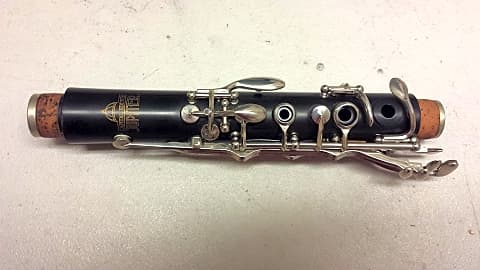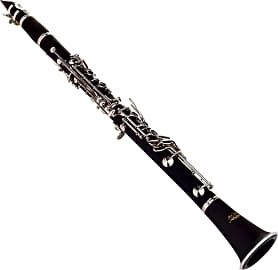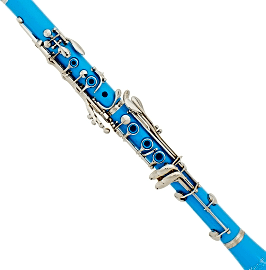The 10 Best Clarinets

This wiki has been updated 39 times since it was first published in March of 2015. Whether you're a beginner or ready to unleash the untapped Benny Goodman within you, one of these clarinets is certain to help you on your way to woodwind greatness. While we can't promise they'll transform you into a legendary Carnegie Hall performer overnight, their responsive keys and high-quality materials will give you plenty of confidence to produce a rich sound in almost any environment. When users buy our independently chosen editorial recommendations, we may earn commissions to help fund the Wiki.
Editor's Notes
April 02, 2020:
Clarinet players come in all types, with all types of budgets, so we've kept a wide range in order to accommodate everyone from novices to the experienced. At the lower end of the price/experience spectrum are the Cecilio Mendini and the Kaizer 1000 Series. Granted, these student clarinets offer a level of quality that will not satisfy anyone above novice status; however, they can be a good foot in the door for students who may or may not stick with it. They might also work for marching band use, especially for younger players who aren't inclined to treat their instruments carefully. As for models offering better playability, there's the popular Jean Paul CL-300 and the Jupiter JCL-700N. These are fine in the hands of beginners who are likely to stick with the instrument, all the way through to students who are already breaking into intermediate territory. Neither is made from wood, which gives them extra durability, and they both come with a case.
For players who have years of experience, and more demanding needs, models from Yamaha and Buffet are always fine choices. These include the Yamaha YCL-650U, a grenadilla wood option, and the Buffet Crampon R13. The latter is exceptionally pricey but has a long history dating back to 1955; it is often cited as the most popular professional model in the world. Note that this latter instrument does not come with a mouthpiece, as most players at this level already own a preferred model (or two).
Special Honors
Backun CG Carbon You could buy a decent car for what the Backun CG Carbon costs, but for professionals who demand nothing less than perfection, this investment is certainly worth it. Its body boasts an exotic wood core as well as the titular carbon fiber, which translates to incredible intonation and projection. It's every bit as handsome as it is playable, too. backunmusical.com
Juleez Hand Painted Although each is playable, the Juleez Hand Painted is an eye-catching piece of artwork that is more likely to live its life as a display piece. Each one is indeed hand-painted, to your custom specifications if you so desire, and finished to a high gloss. Because they're made to order, be prepared to wait a few weeks to receive yours. juleez.com
Selmer Paris Signature Professional The Selmer Paris Signature Professional delivers superior playability and sound with its raised tone holes and adjustable thumbrest, while the silver-plated keys are attractive enough for any professional setting. Its bell, body, and barrel are all made from grenadilla wood, with blue steel springs and leather pads. wwbw.com
Understanding The Clarinet
Most clarinets come with two barrel joints, a longer one and a smaller one.
Clarinets have a single reed and a cylindrical bore. Most people are generally referring to A- and B flat versions when speaking about clarinets, but there is actually a wide family of clarinets ranging from tiny E flat models all the way up to super deep-sounding bass clarinets, which are nearly nine feet long.
A standard A- or B flat clarinet, also known as a soprano clarinet, is roughly two feet in length, which is twice the size of a standard recorder. Clarinets are composed of a mouthpiece, barrel joint, upper and lower joints, a bell, and hardware like the keys and ligature. Most clarinets come with two barrel joints, a longer one and a smaller one. Nearly every clarinet can be disassembled for easy transport and storage.
Clarinets can be made of metal, plastic, or wood. The keys and other hardware are generally silver or nickel coated metal. Professional-quality models are most often made from grenadilla wood with silver-plated keys, while the entry level models are composed of some kind of synthetic material like ABS with lacquer-coated keys.
Clarinets look similar to oboes, but have a wider mouth and just a single reed as opposed to an oboe's thin double reed. Their cylindrical bore runs the full length of the instrument and is the same diameter throughout, except for the lower end of the bell. This contrasts with most wind instruments which have bore diameters that vary in size.
The tonal range of a clarinet is the widest of any wind instrument and every type can play as low as an E, with the majority reaching notes as high as c7. This is nearly a four-octave range, which is almost double the two-and-a-half octave range of a standard saxophone, and one more than the three-octave range of most flutes. This allows a single bass clarinet to play all of the notes that a baritone, tenor, and alto sax combined can play.
A Brief History Of The Clarinet
It can be said that clarinets have their roots in a single-reed instrument from 2700 BCE called the zummara, which was played in Ancient Egypt. While it was also a single-reed instrument, it actually had a double bore. There have been a number of single-reed instruments such as the alboka and the arghul. Various forms of these were played in Ancient Greece, the Middle East, and Europe in the Middle Ages, all of which can be considered precursors to the modern day clarinet.
It didn't have a register key and was played solely in its fundamental register.
The most recent ancestor of the clarinet is a Baroque instrument that was known as the chalumeau. It was similar in size to a recorder, but played with a single-reed mouthpiece and consisting of a cylindrical bore, as opposed to a recorder's conical bore. It didn't have a register key and was played solely in its fundamental register. It also had a very limited one-and-a-half octave range.
The clarinet was invented in 1690 as a modification of the chalumeau. It is unknown whether German instrument maker Johann Christoph Denner, or his son Jacob Denner, first made the modification, but whoever it was decided to replace two of the chalumeau keys with register keys. This increased the instrument's range by over two octaves. They went on to further modify the chalumeau by improving the bell and mouthpiece.
In the same year the clarinets were invented, the Duke of Gronsfeld ordered two for his musicians. Years later in 1712, four boxwood clarinets were bought by the Nuremberg Town band. It wasn't until 1740 that a third register key was added, which allowed clarinet players to hit the low E note. In 1750, the fourth and fifth keys were added by Barthold Fritz. Around this same time, clarinets were being used in operas and orchestras.
Clarinets In Music
A variety of ensembles utilize clarinets in their bands. They are often associated with classical symphony orchestras or harmonic orchestras, which will employ three or four clarinet players, but they can be found in many other types of music. The majority of military bands and marching bands use anywhere from one to four clarinet players.
It is usually reserved for true musicians dedicated to the art.
In both Tango and gypsy orchestras, ensembles are small and clarinet players are responsible for lengthy solos. Chamber music also makes use of clarinets, usually in quintet with a horn, flute, bassoon, and oboe. Chamber music bands will often play a range of music types from modern to classical, which is one reason many consider this one of the most demanding types of music. It is usually reserved for true musicians dedicated to the art.
Clarinets are also heavily utilized in jazz and big band genres. Clarinet players in these styles of music can expect to perform solos one minute and then in harmony with a larger wind section the next. This is a great way for clarinet players to enhance their skills and open themselves up to a broader range of playing styles. They can also sometimes be found in pop and rock bands, usually in an electronic format.















